Publications
Publications
Publications related to our EU project.
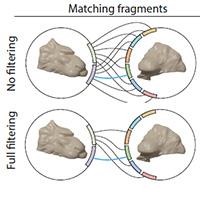
Exploiting Unbroken Surface Congruity for the Acceleration of Fragment Reassembly
Authors: M. A. Savelonas, Andreadis, A., Papaioannou, G., and Mavridis, P.
Conference: EUROGRAPHICS Workshop on Graphics and Cultural Heritage
Publication type: Conference proceedings
Year of conference: 2017
URL: http://graphics.cs.aueb.gr/graphics/docs/papers/GCH2017.pdf
Google Scholar
Abstract: Virtual reassembly problems are often encountered in the cultural heritage domain. The reassembly or "puzzling" problem is typically described as the process for the identification of corresponding pieces within a part collection, followed by the clustering and pose estimation of multiple parts that result in a virtual representation of assembled objects. This work addresses this problem with an efficient, user-guided computational approach. The proposed approach augments the typical reassembly pipeline with a smart culling step, where geometrically incompatible fragment combinations can be quickly rejected. After splitting each fragment into potentially fractured and intact facets, each intact facet is examined for prominent linear or curved structures and a heuristic test is employed to evaluate the plausibility of facet pairs, by comparing the number of feature curves associated with each facet, as well as the geometric texture of associated intact surfaces. This test excludes many pairwise combinations from the remaining part of the reassembly process, significantly reducing overall time cost. For all facet pairs that pass the initial plausibility test, pairwise registration driven by enhanced simulated annealing is applied, followed by multipart registration. The proposed reassembly approach is evaluated on real scanned data and our experiments demonstrate an increase in efficiency that ranges from 30% to more than 500% in some cases, depending on the number of culled combinations.
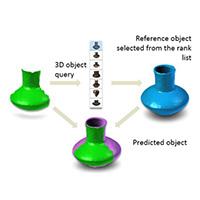
Predictive Digitisation of Cultural Heritage Objects
Authors: I. Pratikakis, Savelonas, M., Mavridis, P., Papaioannou, G., Sfikas, K., Arnaoutoglou, F., and Rieke-Zapp, D.
Journal: Multimedia Tools and Applications
Publication type: Journal article
Pagination: 1-31
Date publised: 06/2017
URL: http://rdcu.be/tOMY
DOI: 10.1007/s11042-017-4928-y
Google Scholar
Abstract: 3D digitisation has been instrumental in the cultural heritage domain for over a decade, contributing to the digital preservation and dissemination of cultural heritage. Still, the typical 3D acquisition workflow remains complex and time-consuming. This work presents the concept of predictive digitisation by means of a platform, aiming to speed-up and simplify 3D digitisation, exploiting similarities in digital repositories of Cultural Heritage objects.
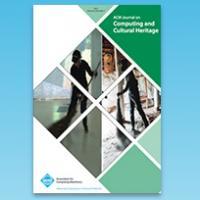
From Reassembly to Object Completion: A Complete Systems Pipeline
Authors: G. Papaioannou, Schreck, T., Andreadis, A., Mavridis, P., Gregor, R., Sipiran, I., and Vardis, K.
Journal: ACM Journal on Computing and Cultural Heritage (JOCCH)
Publication type: Journal article
Volume: 10
Issue: 2
Year of publication: 2017
DOI: 10.1145/3009905
Download: Author-prepared version of the paper (pdf)
Google Scholar
Abstract: The problem of restoration of broken artefacts, where large parts could be missing, is of high importance in archaeology. The typical manual restoration can become a tedious and error-prone process, which also does not scale well. In recent years, many methods have been proposed for assisting the process, most of which target specialized object types or operate under very strict constraints. We propose a digital shape restoration pipeline consisting of proven, robust methods for automatic fragment reassembly and shape completion of generic three-dimensional objects of arbitrary type. In this pipeline, first we introduce a novel unified approach for handling the reassembly of objects from heavily damaged fragments by exploiting both fracture surfaces and salient features on the intact sides of fragments, when available. Second, we propose an object completion procedure based on generalized symmetries and a complementary part extraction process that is suitable for driving the fabrication of missing geometry. We demonstrate the effectiveness of our approach using real-world fractured objects and software implemented as part of the EU-funded PRESIOUS project, which is also available for download from the project site.
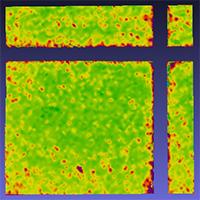
Simulating Erosion on Cultural Heritage Monuments
Authors: P. Perakis, Schellewald, C., Gebremariam, K. F., and Theoharis, T.
Conference: 20th International Conference on Cultural Heritage and New Technologies (CHNT20)
Publication type: Conference proceedings
Year of conferance: 2015
Download: Author-prepared version of the paper (pdf)
Google Scholar
Abstract: The erosion process is a multi-parametric phenomenon which is hard to simulate algorithmically due to the large number of parameters involved as well as the lack of erosion benchmarking data. Erosion data acquisition is particularly challenging due to the large time-frame involved. Our approach toward building an erosion model for specic types of stone and specic environmental parameters is described as well as the acquisition of erosion data from specialized accelerated erosion chambers. The stone types addressed are marble and soapstone. We obtain data from the erosion chambers which simulate atmospheric pollutants, the effect of salt intrusion as well as the freeze-thaw effect. Once a cultural heritage monument is scanned in 3D, the erosion simulator can be used to perform sensitivity analysis on the effect of erosion based on the variation of the input parameter values. This analysis can show the degree of danger that the cultural heritage monument is in, according to the assumed parametric values. Erosion values are mapped onto the 3D scan of the cultural heritage monument and their visual nature is useful for the public dissemination of the involved danger. According to our records, this is the only detailed erosion simulator for stone. This work is supported by the European Unions Seventh Framework Programme (FP7/2007-2013) under grant agreement no 600533 PRESIOUS.
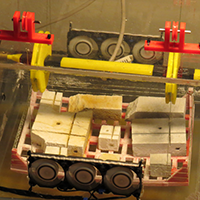
Establishing Parameter Values for the Stone Erosion Process
Authors: I. BarrosBarbosa, Gebremariam, K. F., Perakis, P., Schellewald, C., and Theoharis, T.
Conference: 43rd Annual Conference on Computer Applications and Quantitative Methods in Archaeology (CAA 2015)
Publication type: Conference proceedings
Year of Conference: 2015
Download: Author-prepared version of the paper (pdf)
Google Scholar
Abstract: The computer simulation of the naturally occurring stone erosion process is very attractive because it could enable us to predict the future state of important cultural heritage monuments based on different environment scenarios and thus allow us to take appropriate action in good time. This paper describes the design and construction of two automatic erosion chambers that allows to simulate the Salt and Freeze-and-Thaw effects respectively on a low budget, based on a control system using off-the-shelf components. It also details the parameters that are being measured after each erosion cycle (3D scan, electron microscopy, micro computed tomography, 3D microscopy, XRD and petrography) which will eventually lead to a publicly available database for erosion benchmarking. In the current phase we are only concentrating on Pentelic marble and two types of Grytdal soapstone. This work forms part of the PRESIOUS EU project.
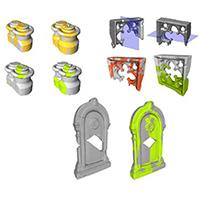
Crowdsourcing and Co-curation in Virtual Museums: A Practice-driven Approach
Authors: D. Biella, Pilz, T., Sacher, D., Weyers, B., Luther, W., Baloian, N., and Schreck, T.
Journal: Journal of Universal Computer Science
Publication type: Journal article
Volume: 22
Pagination: 1277–1297
Date of publication: 10/2016
Download: Author-prepared version of the paper (pdf)
Google Scholar
Abstract: This paper gives an overview on crowdsourcing and co-curation practices in virtual museums. Engaged nonprofessionals and specialists support curators in creating digital 2D or 3D exhibits, exhibitions and tour planning and in the enhancement of metadata using the Virtual Museum and Cultural Object Exchange Format (ViMCOX). ViMCOX is based on international Lightweight Information Describing Objects (LIDO) v1.0 metadata standard, provides the semantic structure of exhibitions and complete museums and includes new features, such as room and outdoor design, interactions with artwork, path planning and dissemination. Various application examples show the impact of crowdsourcing, co-creation and co-curation on the digitalization of expositions in classical museums and on the creation of virtual museums. The case studies are devoted to restoring lost or damaged artwork by the German-Jewish sculptor Leopold Fleischhacker, high-quality 3D shapes and Armenian cross stones. Finally, the paper reports on an evaluation in the field of usability, user interfaces and the crowd's willingness to undertake various co-curation subtasks.
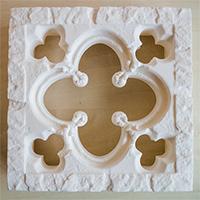
A Soft Union based Method for Virtual Restoration and 3D Printing of Cultural Heritage Objects
Authors: R. Gregor, Mavridis, P., Wiltsche, A., and Schreck, T.
Conference: Eurographics Workshop on Graphics and Cultural Heritage
Publication type: Conference proceedings
Year of conference: 2016
Downloads: Author-prepared version of the paper (pdf), Presentation slides (pdf)
Google Scholar
Abstract: Recent improvements in 3D acquisition and shape processing methods lead to increased digitization of 3D Cultural Heritage (CH) objects. Beyond the mere digital archival of CH artifacts, there is an emerging research area dedicated to digital restoration of 3D Cultural Heritage artifacts. In particular several methods have been published recently that, from a digitized set of fragments, enable their reassembly or even the synthesis of missing or eroded parts. Usually the result of such methods is a set of aligned but disconnected parts. However, it is often desirable to produce a single, watertight mesh that can be easily 3D printed. We propose a method based on a volumetric soft union operation that can be used to combine such sets of aligned fragments to a single manifold mesh while producing smooth and plausible geometry at the seams. We assess its visual quality and efficiency in comparison to an adaption of the well-known Poisson Reconstruction method. Finally, we provide practical insights on printing the results produced by our method on digitized fragments of real CH objects.
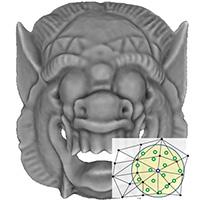
GPU Accelerated Computation of Geometric Descriptors in Parametric Space
Authors: A. Andreadis, Papaioannou, G., and Mavridis, P.
Book: Computer Vision, Imaging and Computer Graphics Theory and Applications
Publication type: Book chapter
Volume: CCIS 598
Pagination: 41-61
Year of publication: 2016
Download: Author-prepared version of the chapter (pdf)
Google Scholar
Abstract: We present a novel generic method for the fast and accurate computation of geometric descriptors. While most existing approaches perform the computations directly on the geometric representation of the model, our method operates in parametric space, decoupling the computational complexity from the underlying mesh geometry. In contrast to other parametric space approaches, our method is not restricted to specic descriptors or parameterisations of the surface. By using the parametric space representation of the mesh geometry, we can trivially exploit massive parallel GPU architectures and achieve interactive computation times, while maintaining high accuracy. This renders the method suitable for computations involving large areas of support and animated shapes.
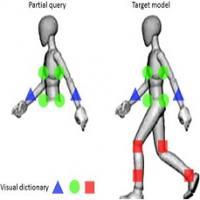
Fisher Encoding of Differential Fast Point Feature Histograms for Partial 3D Object Retrieval
Authors: M. A. Savelonas, Pratikakis, I., and Sfikas, K.
Journal: Pattern Recognition
Publication type: Journal article
ISSN: 0031-3203
Year of publication: 2016
Keywords: Fisher encoding
DOI: 10.1016/j.patcog.2016.02.003
URL: http://www.sciencedirect.com/science/article/pii/S0031320316000595
Download: Author-prepared version of the paper (pdf)
Google Scholar
Abstract: Abstract Partial 3D object retrieval has attracted intense research efforts due to its potential for a wide range of applications, such as 3D object repair and predictive digitization. This work introduces a partial 3D object retrieval method, applicable on both point clouds and structured 3D models, which is based on a shape matching scheme combining local shape descriptors with their Fisher encodings. Experiments on the SHREC 2013 large-scale benchmark dataset for partial object retrieval, as well as on the publicly available Hampson pottery dataset, demonstrate that the proposed method outperforms seven recently evaluated partial retrieval methods.
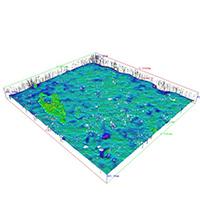
Multi-technique Characterizations of Marble Stones from Elefsis, Greece, and Soapstones from Grytdal, Norway in Accelerated Acid Weathering Studies
Authors: K. Fanta Gebremariam, Perakis, P., Schellewald, C., Theoharis, T., and Kvittingen, L.
Conference: 18th European Conference on Analytical Chemistry (Euroanalysis 2015)
Publication type: Poster presentation
Year of publication: 2015
Download: The poster (pdf)
Google Scholar
Abstract: Studies on the effects of acid pollution were conducted on three types of stone samples: marble stone from Elefsis, Greece, and two types of soapstone from Grytdal, Norway. The Pentelikon marble stone from Elefsis used in columns at the archeological site in Elefsis where as the Grytdal soapstones for the construction of Nidaros Cathedral Church in Trondheim. The investigation is part of a larger project in which we attempt to estimate and predict stone erosion from weathering, in order to reconstruct earlier appearances and predict future transformations. The approach involves studies of accelerated weathering effects from salt, acid and freeze-thaw on stone samples, site exposure tests and successive high accuracy surface scanning of the monuments in which the stones have been used. For the simulation of the accelerated acid weathering two acidic conditions (nitric and sulphuric acids) at constant pH’s were selected. Loss in mass with time and the physicochemical changes on macroscopic and microscopic levels were monitored, including qualitative and quantitative estimates of the acid rain-induced surface recession. The stones were analyzed before and after exposure to the acidic conditions with a range of analytical techniques. The acidic solutions used in the acid weathering simulation were evaporated to dryness and the residue investigated to identify salts produced in order to shed additional light on the deterioration processes.
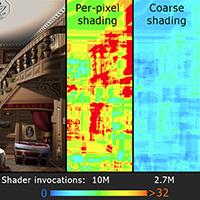
MSAA-Based Coarse Shading for Power-Efficient Rendering on High Pixel-Density Displays
Authors: P. Mavridis and Papaioannou, G.
Conference: High Performance Graphics
Publication type: Poster
Year of publication: 2015
Downloads: One-page abstract (pdf), Presentation (pdf), and Poster (pdf)
Google Scholar
Abstract: Maintaining real-time frame rates at the native resolution of high pixel-density displays is very challenging, especially on power-constrained mobile devices. Decoupled sampling approaches offer a better solution to this problem, compared to rendering at a lower resolution and up-scaling, by sampling the visibility at a higher rate than shading, thus preserving the clarity of geometric edges, while reducing the cost of shading. However, this ability is rather limited in current graphics architectures, where the widely-used MSAA algorithm shades each covered primitive at least once per pixel, without directly providing the ability to compute pixel shading at a more coarse rate. While various extensions of the graphics pipeline for coarse shading have been proposed, in this work we focus on a software implementation for existing GPUs. To this end, we render an intermediate render buffer at a lower pixel count, but at the same time we compensate the loss in resolution by adding the appropriate amount of MSAA sub-pixel samples, in order to guarantee at least one visibility sample per display pixel. Subsequently, a custom resolve shader is used to perform the mapping of sub-pixel MSAA samples to pixels. This simple technique effectively shades more coarsely pixel blocks, where there are no geometric edges. While variations of this idea have been previously used on game consoles, a proper evaluation of the effectiveness of this method at decreasing shader invocations and energy consumption is missing from the bibliography and is our main contribution. We demonstrate our method on several test scenes with varying degrees of geometric and shading complexity and our measurements indicate an up to 45% reduction in energy consumption.
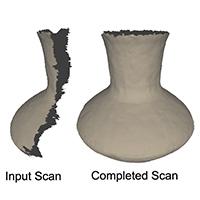
Object Completion using k-Sparse Optimization
Authors: P. Mavridis, Sipiran, I., Andreadis, A., and Papaioannou, G.
Journal: Computer Graphics Forum (proc. Pacific Graphics)
Publication type: Journal article
Volume: 34
Issue: 7
Year of publication: 2015
Download: Author-prepared version of the paper (preprint) (pdf)
Google Scholar
Abstract: We present a new method for the completion of partial globally-symmetric 3D objects, based on the detection of partial and approximate symmetries in the incomplete input dataset. In our approach, symmetry detection is formulated as a constrained sparsity maximization problem, which is solved efficiently using a robust RANSAC-based optimizer. The detected partial symmetries are then reused iteratively, in order to complete the missing parts of the object. A global error relaxation method minimizes the accumulated alignment errors and a non-rigid registration approach applies local deformations in order to properly handle approximate symmetry. Unlike previous approaches, our method does not rely on the computation of features, it uniformly handles translational, rotational and reflectional symmetries and can provide plausible object completion results, even on challenging cases, where more than half of the target object is missing. We demonstrate our algorithm in the completion of 3D scans with varying levels of partiality and we show the applicability of our approach in the repair and completion of heavily eroded or incomplete cultural heritage objects.
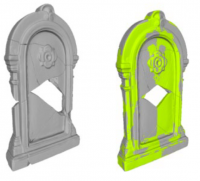
Crowdsourcing and Knowledge Co-creation in Virtual Museums
Authors: D. Biella, Sacher, D., Weyers, B., Luther, W., Baloian, N., and Schreck, T.
Conference: Proc. International Conference on Collaboration and Technology (CRIWG)
Publication type: Conference paper
Year of publication: 2015
Downloads: Author-prepared version of the paper (pdf)
Google Scholar
Abstract: This paper gives an overview on crowdsourcing practices in virtual museums. Engaged nonprofessionals and specialists support curators in creating digital 2D or 3D exhibits, exhibitions and tour planning and enhancement of metadata using the Virtual Museum and Cultural Object Exchange Format (ViMCOX). ViMCOX provides the semantic structure of exhibitions and complete museums and includes new features, such as room and outdoor design, interactions with artwork, path planning and dissemination and presentation of contents. Application examples show the impact of crowdsourcing in the Museo de Arte Contemporaneo in Santiago de Chile and in the virtual museum depicting the life and work of the Jewish sculptor Leopold Fleischhacker. A further use case is devoted to crowd-based support for restoration of high-quality 3D shapes.
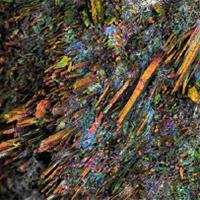
Accelerated Salt Weathering Studies on Marble Stones from Elefsis, Greece, and Soapstones from Grytdal, Norway
Authors: K. Fanta Gebremariam, Barros-Barbosa, I., Perakis, P., Schellewald, C., Theoharis, T., and Kvittingen, L.
Conference: TECHNART 2015 − Non-destructive and microanalytical techniques in art and cultural heritage
Publication type: Conference paper
Year of publication: 2015
Download: The poster (pdf)
Google Scholar
Abstract: The weathering experiment reported is part of a broader project that, among other aims, investigate innovative ICT solutions to quantify and characterize stone monument degradations. As an output, models would be developed for forward and inverse weathering prediction based on targeted high-accuracy surface scans and accelerated weathering experiments. The salt weathering experiment, along with similar experiments on other factors of deterioration, would help to gain insight into the deterioration processes at microscopic and macroscopic levels. The results would be used to better explain observed deteriorations\weathering and, thus, their prediction.
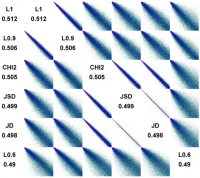
Empirical Evaluation of Dissimilarity Measures for 3D Object Retrieval with Application to Multi-feature Retrieval
Authors: R. Gregor, Lamprecht, A., Sipiran, I., Schreck, T., and Bustos, B.
Conference: in Proc. 13th International Workshop on Content-Based Multimedia Indexing (CBMI'15)
Publication type: Conference paper
Year of publication: 2015
Download: Author-prepared version of the paper (pdf)
Google Scholar
Abstract: A common approach for implementing contentbased multimedia retrieval tasks resorts to extracting highdimensional feature vectors from the multimedia objects. In combination with an appropriate dissimilarity function, such as the well-known Lp functions or statistical measures like χ 2 , one can rank objects by dissimilarity with respect to a query. For many multimedia retrieval problems, a large number of feature extraction methods have been proposed and experimentally evaluated for their effectiveness. Much less work has been done to systematically study the impact of the choice of dissimilarity function on the retrieval effectiveness.
Inspired by previous work which compared dissimilarity functions for image retrieval, we provide an extensive comparison of dissimilarity measures for 3D object retrieval. Our study is based on an encompassing set of feature extractors, dissimilarity measures and benchmark data sets. We identify the best performing dissimilarity measures and in turn identify dependencies between well-performing dissimilarity measures and types of 3D features. Based on these findings, we show that the effectiveness of 3D retrieval can be improved by a feature-dependent measure choice. In addition, we apply different normalization schemes to the dissimilarity distributions in order to show improved retrieval effectiveness for late fusion of multi-feature combination. Finally, we present preliminary findings on the correlation of rankings for dissimilarity measures, which could be exploited for further improvement of retrieval effectiveness for single features as well as combinations.
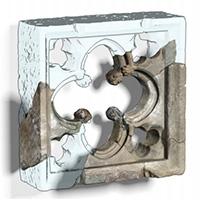
Generalized Digital Reassembly using Geometric Registration
Authors: A. Andreadis, Papaioannou, G., and Mavridis, P.
Conference: Proc. IEEE/EG Digital Heritage
Publication type: Conference proceedings
Year of publication: 2015
Download: Author-prepared version of the paper (pdf)
Google Scholar
Abstract: We present a novel and generic user-guided approach for the digital reconstruction of cultural heritage finds from fragments, which operates directly on generic 3D objects. Central to our approach is a three-tier geometric registration approach that addresses the reassembly problem using i) the contact surface of the fractured objects, ii) feature curves on the intact surfaces and iii) partial object symmetries. In contrast to most existing methodologies, our approach is more generic and addresses even the most difficult cases, where contact surface is unusable, small or absent. We evaluate our method using digitized fragments from the Nidaros Cathedral.
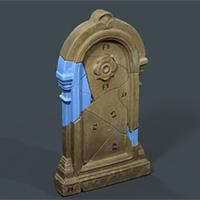
Fractured 3D Object Restoration and Completion
Authors: A. Andreadis, Gregor, R., Sipiran, I., Mavridis, P., Papaioannou, G., and Schreck, T.
Conference: ACM SIGGRAPH Poster Session
Publication type: Conference paper
Year of publication: 2015
Downloads: One-page abstract pre-print (pdf), User-prepared print version of the poster (pdf)
Google Scholar
Abstract: The problem of object restoration from eroded fragments, where large parts could be missing, is of high relevance in archaeology. Manual restoration is possible and common in practice but it is a tedious and error-prone process, which does not scale well. Solutions for specific parts of the problem have been proposed but a complete reassembly and repair pipeline is absent from the bibliography. We propose a shape restoration pipeline consisting of appropriate methods for automatic fragment reassembly and shape completion. We demonstrate the effectiveness of our approach using real-world fractured objects. We suggest two main restoration phases. In the first phase, fragments are reassembled. The reassembly solution results from finding the Minimum Spanning Forest for pairwise matches between fragment contact surfaces, which have been identified in a preprocessing step . The reassembly is guided by global error relaxation and can also make use of external feature curves on the fragments. The obtained reassembly solution typically misses some parts of the shape, due to missing or eroded fragments. Therefore, in the second phase we compute plausible complete versions of the reassembles partial shapes. This is done by robust detection of global shape symmetries which relies on local shape features. Completion of non-symmetric shapes is assisted by template repair shapes retrieved by a partial 3D similarity search. The final shape is finished by merging and smoothing of the obtained parts, inpainting of missing local shape information, and export of synthesized missing parts for physical restoration.
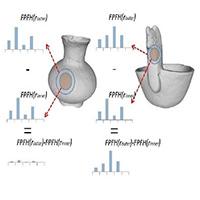
Partial 3D Object Retrieval combining Local Shape Descriptors with Global Fisher Vectors
Authors: M. A. Savelonas, Pratikakis, I., and Sfikas, K.
Conference: Eurographics Workshop on 3D Object Retrieval
Publication type: Conference proceedings
Year of publication: 2015
Download: Author-prepared version of the paper (pdf)
Google Scholar
Abstract: This work introduces a partial 3D object retrieval method, applicable on both meshes and point clouds, which is based on a hybrid shape matching scheme combining local shape descriptors with global Fisher vectors. The differential fast point feature histogram (dFPFH) is defined so as to extend the well-known FPFH descriptor in order to capture local geometry transitions. Local shape similarity is quantified by averaging the minimum weighted distances associated with pairs of dFPFH values calculated on the partial query and the target object. Global shape similarity is derived by means of a weighted distance of Fisher vectors. Local and global distances are derived for multiple scales and are being combined to obtain a ranked list of the most similar complete 3D objects. Experiments on the large-scale benchmark dataset for partial object retrieval of the shape retrieval contest (SHREC) 2013, as well as on the publicly available Hampson pottery dataset, support improved performance of the proposed method against seven recently evaluated retrieval methods.
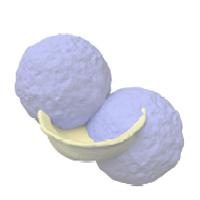
Automatic 3D Object Fracturing for Evaluation of Partial Retrieval and Object Restoration Tasks - Benchmark and Application to 3D Cultural Heritage Data
Authors: R. Gregor, Bauer, D., Sipiran, I., Perakis, P., and Schreck, T.
Conference: Eurographics Workshop on 3D Object Retrieval
Publincation type: Conference proceedings
Year of publication: 2015
Download: Author-prepared version of the paper (pdf)
Google Scholar
Abstract: Recently, 3D digitization and printing hardware have seen rapidly increasing adoption. High-quality digitization of real-world objects is becoming more and more efficient. In this context, growing amounts of data from the cultural heritage (CH) domain such as columns, tombstones or arches are being digitized and archived in 3D repositories. In many cases, these objects are not complete, but fragmented into several pieces and eroded over time. As manual restoration of fragmented objects is a tedious and error-prone process, recent work has addressed automatic reassembly and completion of fragmented 3D data sets. While a growing number of related techniques are being proposed by researchers, their evaluation currently is limited to smaller numbers of high-quality test fragment sets.We address this gap by contributing a methodology to automatically generate 3D fragment data based on synthetic fracturing of 3D input objects. Our methodology allows generating large-scale fragment test data sets from existing CH object models, complementing manual benchmark generation based on scanning of fragmented real objects. Besides being scalable, our approach also has the advantage to come with ground truth information (i.e. the input objects), which is often not available when scans of real fragments are used. We apply our approach to the Hampson collection of digitized pottery objects, creating and making available a first, larger restoration test data set that comes with ground truth. Furthermore, we illustrate the usefulness of our test data for evaluation of a recent 3D restoration method based on symmetry analysis and also outline how the applicability of 3D retrieval techniques could be evaluated with respect to 3D restoration tasks. Finally, we discuss first results of an ongoing extension of our methodology to include object erosion processes by means of a physiochemical model simulating weathering effects.
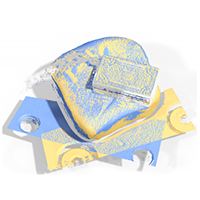
Efficient Sparse ICP
Authors: P. Mavridis, Andreadis, A., and Papaioannou, G.
Journal: Computer Aided Geometric Design (Proc. Geometric Modeling and Processing)
Volume: 35–36
Pagination: 16-26
Publication type: Journal article
Year of publication: 2015
Download: Author-prepared version of the paper (pdf)
Google Scholar
Abstract: The registration of two geometric surfaces is typically addressed using variants of the Iterative Closest Point (ICP) algorithm. The Sparse ICP method formulates the problem using sparsity-inducing norms, significantly improving the resilience of the registration process to large amounts of noise and outliers, but introduces a significant performance degradation. In this paper we first identify the reasons for this performance degradation and propose a hybrid optimization system that combines a Simulated Annealing search along with the standard Sparse ICP, in order to solve the underlying optimization problem more efficiently. We also provide several insights on how to further improve the overall efficiency by using a combination of approximate distance queries, parallel execution and uniform subsampling. The resulting method provides cumulative performance gain of more than one order of magnitude, as demonstrated through the registration of partially overlapping scans with various degrees of noise and outliers.
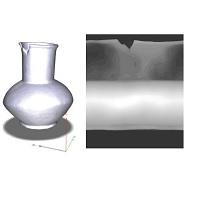
An Overview of Partial 3D Object Retrieval Methodologies
Authors: M. A. Savelonas, Pratikakis, I., and Sfikas, K.
Journal: Multimedia Tools and Applications, Springer
Pagination: 1-26
Publication type: Journal article
Year of publication: 2014
Download: Author-prepared version of the paper (pdf)
Google Scholar
Abstract: This work offers an overview of the state-of-the-art on the emerging area of 3D object retrieval based on partial queries. This research area is associated with several application domains, including face recognition and digital libraries of cultural heritage objects. The existing partial 3D object retrieval methods can be mainly classified as: i) view-based, ii) partbased, iii) bag of visual words (BoVW)-based, and iv) hybrid methods combining these three main paradigms or methods which cannot be straightforwardly classified. Several methodological aspects are identified, including the use of interest points and the exploitation of 2.5D projections, whereas the available evaluation datasets and campaigns are addressed. A thorough discussion follows, identifying advantages and limitations.
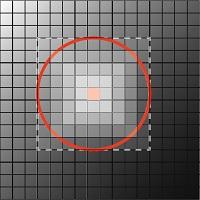
Partial Matching of 3D Cultural Heritage Objects using Panoramic Views
Authors: K. Sfikas, Pratikakis, I., Koutsoudis, A., Savelonas, M. A., and Theoharis, T.
Journal: Multimedia Tools and Applications, Springer
Publication type: Journal article
Pagination: 1-15
Year of publication: 2014
Download: Author-preapred version of the paper (pdf)
Google Scholar
Abstract: In this paper, we present a method for partial matching and retrieval of 3D objects based on range image queries. The proposed methodology addresses the retrieval of complete 3D objects using range image queries that represent partial views. The core methodology relies upon Bag-of-Visual-Words modelling and enhanced Dense SIFT descriptor computed on panoramic views and range image queries. Performance evaluation builds upon standard measures and a challenging 3D pottery dataset originating from the Hampson Archaeological Museum collection.
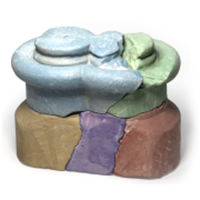
Fractured Object Reassembly via Robust Surface Registration
Authors: P. Mavridis, Andreadis, A., and Papaioannou, G.
Conference: Eurographics Conference (short paper).
Publication type: Conference proceedings
Year of publication: 2015
Download: Author-prepared version of the paper (pdf)
Google Scholar
Abstract: The reassembly of fractured 3D objects from their parts is an important problem in cultural heritage and otherdomains.We approach reassembly from a geometric matching perspective and propose a pipeline for the automatic solution of the problem, where an efficient and generic three-level coarse-to-fine search strategy is used for the underlying global optimization. Key to the efficiency of our approach is the use of a discretized approximation of the surfaces’ distance field, which significantly reduces the cost of distance queries and allows our method to systematically search the global parameter space with minimal cost. The resulting reassembly pipeline provides highly reliable alignment, as demonstrated through the reassembly of fractured objects from their fragments and the reconstruction of 3D objects from partial scans, showcasing the wide applicability of our methodology.
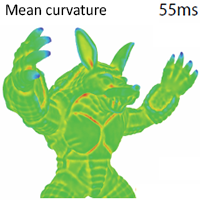
A Parametric Space Approach to the Computation of Multi-Scale Geometric Features
Authors: A. Andreadis, Papaioannou, G., and Mavridis, P.
Conference: International Conference on Computer Graphics Theory and Applications
Publication type: s
Year of publication: 2015
Download: Author-prepared version of the paper (pdf)
Google Scholar
Abstract: In this paper we present a novel generic method for the fast and accurate computation of geometric features at multiple scales. The presented method works on arbitrarily complex models and operates in the parametric space. The majority of the existing methods compute local features directly on the geometric representation of the model. Our approach decouples the computational complexity from the underlying geometry and in contrast to other parametric space methods, it is not restricted to a specific feature or parameterization of the surface. We show that the method performs accurately and at interactive rates, even for large feature areas of support, rendering the method suitable for animated shapes.
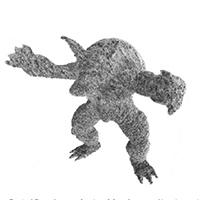
Towards the Creation of Digital Stones from 2D Samples
Authors: C. Schellewald, Perakis, P., and Theoharis, T.
Conference: Eurographics Workshop on Graphics and Cultural Heritage
Publication type: Conference paper
Year of publication: 2014
Download: Author-prepared version of the paper (pdf)
Google Scholar
Abstract: In order to decide which preservation strategies one should follow for Cultural Heritage objects made of stone, it is necessary to estimate the impact of different alternative strategies. A useful aid in such a process is the simulation of the stone degradation process. The first step in such a process is to create realistic digital representations of stones. In this work we present early efforts to create 3D voxelized representations of stones from given 2D example-textures of the desired stone-material. The process aims at the creation of 3D stone materials, consistentwith 2D samples. The presented work is one part of the PRESIOUS EU project.
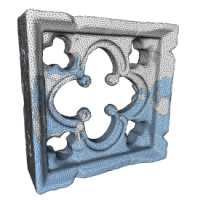
Towards Automated 3D Reconstruction of Defective Cultural Heritage Objects
Authors: R. Gregor, Sipiran, I., Papaioannou, G., Schreck, T., Andreadis, A., and Mavridis, P.
Conference: Eurographics Workshop on Graphics and Cultural Heritage
Publication type: Conference proceedings
Publisher: Eurographics Association
Pagination: 135-144
Year of conference: 2014
DOI: 10.2312/gch.20141311
URL: http://diglib.eg.org/EG/DL/WS/GCH/GCH2014/135-144.pdf
Download: Author-prepared version of the paper (pdf)
Google Scholar
Abstract: Due to recent improvements in 3D acquisition and shape processing technology, the digitization of Cultural Heritage (CH) artifacts is gaining increased application in context of archival and archaeological research. This increasing availability of acquisition technologies also implies a need for intelligent processing methods that can cope with imperfect object scans. Specifically for Cultural Heritage objects, besides imperfections given by the digitization process, also the original artifact objects may be imperfect due to deterioration or fragmentation processes. Currently, the reconstruction of previously digitized CH artifacts is mostly performed manually by expert users reassembling fragment parts and completing imperfect objects by modeling. However, more automatic methods for CH object repair and completion are needed to cope with increasingly large data becoming available. In this conceptual paper, we first provide a brief survey of typical imperfections in CH artifact scan data and in turn motivate the need for respective repair methods. We survey and classify a selection of existing reconstruction methods with respect to their applicability for CH objects, and then discuss how these approaches can be extended and combined to address various types of physical defects that are encountered in CH artifacts by proposing a flexible repair workflow for 3D digitizations of CH objects. The workflow accommodates an automatic reassembly step which can deal with fragmented input data. It also includes the similarity-based retrieval of appropriate complementary object data which is used to repair local and global object defects. Finally, we discuss options for evaluation of the effectiveness of such a CH repair workflow.
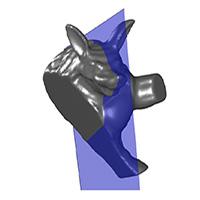
Approximate Symmetry Detection in Partial 3D Meshes
Authors: I. Sipiran, Gregor, R., and Schreck, T.
Journal: Computer Graphics Forum (proc. Pacific Graphics)
Publication type: Journal article
Volume: 33
Issue: 7
Pagination: 131-140
Year of publication: 2014
Download: Author pre-print version (pdf)
Google Scholar
Abstract: Symmetry is a common characteristic in natural and man-made objects. Its ubiquitous nature can be exploited to facilitate the analysis and processing of computational representations of real objects. In particular, in computer graphics, the detection of symmetries in 3D geometry has enabled a number of applications in modeling and reconstruction. However, the problem of symmetry detection in incomplete geometry remains a challenging task. In this paper, we propose a vote-based approach to detect symmetry in 3D shapes, with special interest in modelswith large missing parts. Our algorithm generates a set of candidate symmetries by matching local maxima of a surface function based on the heat diffusion in local domains, which guarantee robustness to missing data. In order to deal with local perturbations, we propose a multi-scale surface function that is useful to select a set of distinctive points over which the approximate symmetries are defined. In addition, we introduce a vote-based scheme that is aware of the partiality, and therefore reduces the number of false positive votes for the candidate symmetries. We show the effectiveness of our method in a varied set of 3D shapes and different levels of partiality. Furthermore, we show the applicability of our algorithm in the repair and completion of challenging reassembled objects in the context of cultural heritage.

A benchmark of simulated range images for partial shape retrieval
Authors: I. Sipiran, Meruane, R., Bustos, B., Schreck, T., Li, B., Lu, Y., and Johan, H.
Journal: The Visual Computer
Publication type: Journal article
Pagination: 1-16
Year of publication: 2014
DOI: 10.1007/s00371-014-0937-2
URL: http://dx.doi.org/10.1007/s00371-014-0937-2
Download: Author pre-print version (pdf)
Google Scholar
Abstract: In this paper, we address the evaluation of algorithms for partial shape retrieval using a large-scale simulated benchmark of partial views which are used as queries. Since the scanning of real objects is a time-consuming task, we create a simulation that generates a set of views from a target model and at different levels of complexity (amount of missing data). In total, our benchmark contains 7,200 partial views. Furthermore, we propose the use of weighted effectiveness measures based on the complexity of a query. With these characteristics, we aim at jointly evaluating the effectiveness, efficiency and robustness of existing algorithms. As a result of our evaluation, we found that a combination of methods provides the best effectiveness, mainly due to the complementary information that they deliver. The obtained results open new questions regarding the diculty of the partial shape retrieval problem. As aconsequence, potential future directions are also identified.
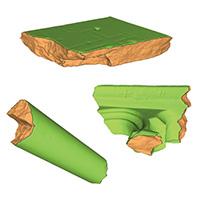
Facet Extraction and Classification for the Reassembly of Fractured 3D Objects
Authors: A. Andreadis, Mavridis, P., and Papaioannou, G.
Conference: Eurographics
Conference location: Strasbourg
Publication type: Conference proceedings
Year of conference: 2014
Keywords: clustering, feature extraction, segmentation
Downloads: Author-prepared version of the poster paper (pdf), A4 version of the poster (pdf)
Google Scholar
Abstract: The reassembly of fractured 3D objects is a critical problem in computational archaeology, and other application domains. An essential part of this problem is to distinguish the regions of the object that belong to the original surface from the fractured ones. A general strategy to solve this region classification problem is to first divide the surface of the object into distinct facets and then classify each one of them based on statistical properties. While many relevant algorithms have been previously proposed, a comparative evaluation of some well-known segmentation strategies, when used in the context of such a problem, is absent from the bibliography. In this poster we present our ongoing work on the evaluation of the performance and quality of segmentation algorithms when operating on fractured objects. We also present a novel method for the classification of the segmented regions to intact and fractured, based on their statistical properties.
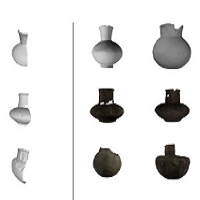
Fisher encoding of adaptive fast persistent feature histograms for partial retrieval of 3D pottery objects
Authors: M. A. Savelonas, Pratikakis, I., and Sfikas, K.
Conference: Eurographics Workshop on 3D Object Retrieval
Publication type: Conference proceedings
Year of conference: 2014
Download: Author-prepared version of the paper (pdf)
Google Scholar
Abstract: Cultural heritage is a natural application domain for partial 3D object retrieval, since it usually involves objects that have only been partially preserved. This work introduces a method for the retrieval of 3D pottery objects, based on partial point cloud queries. The proposed method extracts fast persistent feature histograms calculated adaptively to the mean point distances of the point cloud query. The extracted set of vectors is refined by a denoising component, which employs statistical filtering. The remaining vectors are further refined by a filtering component, which discards points surrounded by surfaces of extremely fine-grained irregularity, often associated with artefact damages. A bag of visual words scheme is used, which starts from the final set of persistent feature histogram vectors and estimates Gaussian mixture models by means of an expectation maximization algorithm. The resulting Gaussian mixture models define the visual codebook, which is used within the context of Fisher encoding. Experiments are performed on a challenging dataset of pottery objects, obtained from the publicly available Hampson collection.
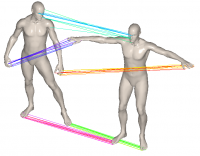
A Fully Hierarchical Approach for Finding Correspondences in Non-Rigid Shapes
Authors: I. Sipiran and Bustos, B.
Conference: Computer Vision (ICCV), 2013 IEEE International Conference on
Publication type: Conference paper
Year of publication: 2013
Download: Author-prepared version of the paper (pdf)
Google Scholar
Abstract: This paper presents a hierarchical method for finding correspondences in non-rigid shapes. We propose a new representation for 3D meshes: the decomposition tree. This structure characterizes the recursive decomposition process of a mesh into regions of interest and keypoints. The internalnodes contain regions of interest (which may be recursively decomposed) and the leaf nodes contain the keypoints to be matched. We also propose a hierarchical matching algorithm that performs in a level-wise manner. The matching process is guided by the similarity between regions inhigh levels of the tree, until reaching the keypoints stored in the leaves. This allows us to reduce the search space of correspondences, making also the matching process efficient. We evaluate the effectiveness of our approach using the SHREC’2010 robust correspondence benchmark. In addition,we show that our results outperform the state of the art.
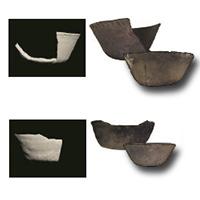
3D Object Partial Matching using panoramic views
Authors: K. Sfikas, Pratikakis, I., Koutsoudis, A., Savelonas, M., and Theoharis, T.
Conference: ICIAP 2013 Workshops
Conference location: Naples, ITALY
Publication type: Conference paper
Year of conference: 2013
Download: Author-prepared version of the paper (pdf)
Google Scholar
Abstract: In this paper, a methodology for 3D object partial matching and retrieval based on range image queries is presented. The proposed methodology addresses the retrieval of complete 3D objects based on artificially created range image queries which represent partial views. The core methodology relies upon Dense SIFT descriptors computed on panoramic views. Performance evaluation builds upon the standard measures and a challenging 3D pottery dataset originated from the Hampson Archeological Museum collection.
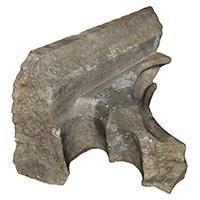
Multi-scale 3D Digitization at Nidaros Cathedral: from archiving to large-scale visualization
Authors: T. Theoharis, Papaioannou, G., Bjørlykke, K., Ekroll, Ø., Rieke-Zapp, D., Lein, A., and Andreadis, A.
Conference: 18th Conference on Cultural Heritage and New Technologies
Publication type: Conference proceedings
Year of conference: 2013
Download: Author-prepared version of the paper (pdf)
Google Scholar
Abstract: 3D scanning in cultural heritage (CH) is used in most cases either for the faithful generation of digital models of CH objects or for visualization purposes. In this paper, we move a step further and concentrate on documenting the requirements and our experience in 3D scanning for alternative CH application scenarios, where digitization is not the end product, but rather the means to augment the existing information and acquired data. In our work, which is part of the PRESIOUS EU-funded project, we aim at utilizing and inventing new methodologies and technologies for the prediction of geometric information on CH data, ranging from the digitization process itself to geometric reassembly, shape prediction and simulation/prediction of monument degradation. To this end, the scanning requirements of the different processing tasks are given, including specialized high-definition scans for erosion measurement, meso-scale digitization for reassembly as well as for the visualization of the results. Important practical lessons are drawn and the actual digitisation pipelines of state-of-art 3D digitisation technologies are given. A practical discussion summarizes our multi-scale digitisation experience (giving the accuracy, required time and resulting data size that we observed), mainly drawn from the digitization activities at the Nidaros Cathedral, Trondheim, Norway.
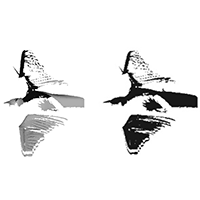
{SHREC’13} Track: Large-Scale Partial Shape Retrieval Using Simulated Range Images
Authors: I. Sipiran, Meruane, R., Bustos, B., Schreck, T., Johan, H., Li, B., and Lu, Y.
Conference: Eurographics Workshop on 3D Object Retrieval
Publication type: Conference paper
Year of conference: 2013
Download: Author-prepared version of the paper (pdf)
Google Scholar
Abstract: Partial shape retrieval is a challenging problem in content-based 3D model retrieval. This track intends to evaluate the performance of existing algorithms for partial retrieval. The contest is based on a new large-scale query set obtained by mimicking the range image acquisition using a standard 3D benchmark as target set. The query set contains 7200 partial meshes with different levels of complexity. Furthermore, we propose the use of new performance measures based on a partiality factor. With this characteristics, our goal is to evaluate several important aspects: effectiveness, efficiency, robustness and scalability. The obtained results of this track open new questions regarding the difficulty of the partial shape retrieval problem and the scalability of algorithms. In addition,potential future directions on this topic are identified.
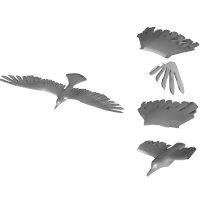
Data-aware 3D partitioning for generic shape retrieval
Authors: I. Sipiran, Bustos, B., and Schreck, T.
Journal: Computers & Graphics, Elsevier
Publication type: Journal article
Keywords: Mesh partitioning, Optimization matching, Shape retrieval
Year of publication: 2013
Download: cag2013.pdf
Google Scholar
Abstract: In this paper, we present a new approach for generic 3D shape retrieval based on a mesh partitioning scheme. Our method combines a mesh global description and mesh partition descriptions to represent a 3D shape. The partitioning is useful because it helps us to extract additional information in a more local sense. Thus, part descriptions can mitigate the semantic gap imposed by global description methods. We propose to find spatial agglomerations of local features to generate mesh partitions. Hence, the definition of a distance function is stated as an optimization problem to find the best match between two shape representations. We show that mesh partitions are representative and therefore it helps to improve the effectiveness in retrieval tasks. We present exhaustive experimentation using the SHREC'09 Generic Shape Retrieval Benchmark.
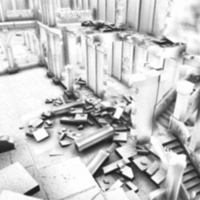
Multi-view Ambient Occlusion with Importance Sampling
Authors: K. Vardis, Papaioannou, G., and Gaitatzes, A.
Conference: ACM SIGGRAPH Symposium on Interactive 3D Graphics and Games
Publication type: Conference proceedings
Publisher: ACM
Conference location: Orlando (FL), USA
Pagination: 111-118
Year of conference: 2013
Keywords: ambient obscurance, ambient occlusion, real-time rendering, screen space
DOI: 10.1145/2448196.2448214
Downloads: Author-prepared version of the paper (pdf), Supplemental material (pdf)
Google Scholar
Abstract: Screen-space ambient occlusion and obscurance (AO) techniques have become de-facto methods for ambient light attenuation and contact shadows in real-time rendering. Although extensive research has been conducted to improve the quality and performance of AO techniques, view-dependent artifacts remain a major issue. This paper introduces Multi-view Ambient Occlusion, a generic per-fragment view weighting scheme for evaluating screen-space occlusion or obscurance using multiple, arbitrary views, such as the readily available shadow maps. Additionally, it exploits the resulting weights to perform adaptive sampling, based on the importance of each view to reduce the total number of samples, while maintaining the image quality. Multi-view Ambient Occlusion improves and stabilizes the screen-space AO estimation without overestimating the results and can be combined with a variety of existing screenspace AO techniques. We demonstrate the results of our sampling method with both open volume- and solid angle-based AO algorithms.
